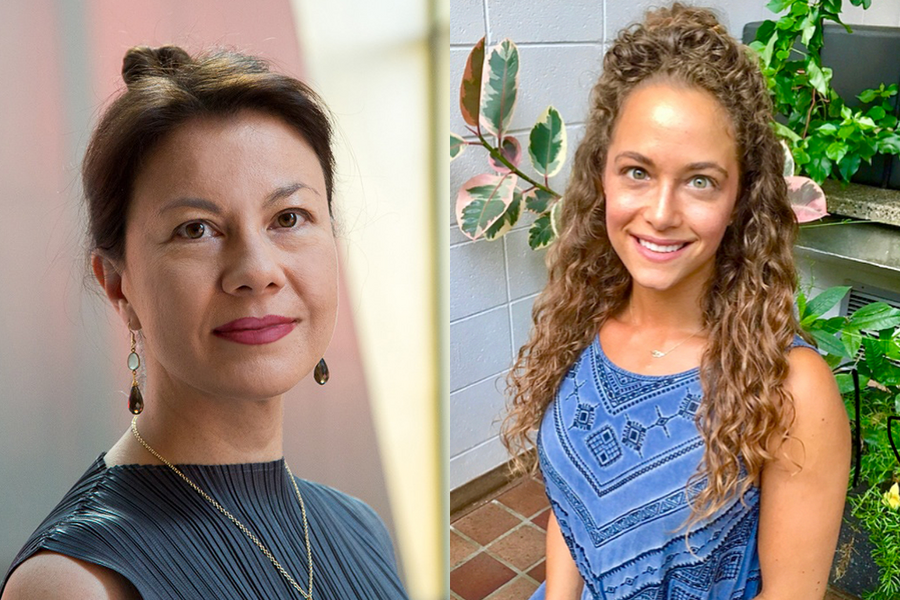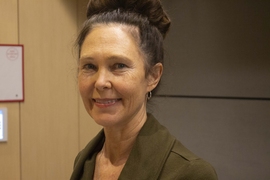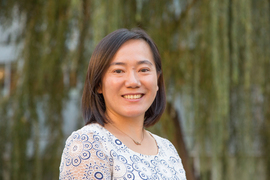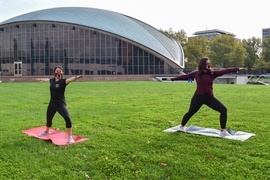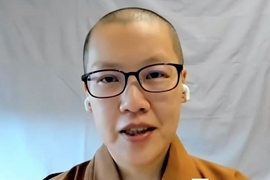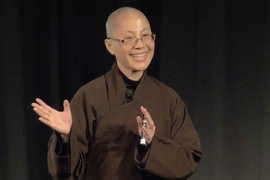Last spring, MIT Professor Emma Teng and Lead Wellness Instructor Sarah Johnson worked together to teach a joint class: 21G.015 (Introduction to Buddhism, Mindfulness, and Meditation), developed as a companion to PE.0534 (Fitness and Meditation), taught by Johnson. In the “mens et manus” tradition of MIT, the class gave students an opportunity to study and experience the history, theory, and practice of these traditions. Teng and Johnson spoke about the experience.
Q: What was the impetus to create this joint class?
Teng: The inspiration was Carrie Moore, director of physical education and wellness and an MIT assistant professor. When MIT’s fitness requirement was changed to a fitness and wellness requirement, Moore realized that this might make room for new collaborations across the Institute, and she mentioned the possibility of co-taught classes with SHASS [the School of Humanities, Arts, and Social Sciences]. I was intrigued by what this might mean, so I reached out to her. We started talking, and Sarah joined the conversation, and the idea for this class was born. For many years, I’ve been teaching a class called “Introduction to East Asian Cultures: From Zen to K-Pop” in which I have included some basics on the ideas and history of Buddhism. I thought I could take some of that and create a one-quarter short subject that could fit with a wellness class. As far as we know, this was the first joint class of its kind attempted between a physical education and academic class.
Johnson: We originally met in fall 2019, and then the pandemic put a hold on the idea for quite some time until this past quarter, when we were finally able to pursue it. In DAPER [the Department of Athletics, Physical Education, and Recreation], we had already had a meditation class we started a couple years prior. It had come out of a MindHandHeart innovation grant. And it quickly became one of our most popular wellness courses.
Q: What did the joint class look like?
Johnson: The yoga and meditation class met twice-a-week on Tuesdays and Thursdays, and the academic class met once-a-week on Thursdays in the hour prior to the fitness and wellness class. Emma and I attended each other’s classes so we could strengthen the integration.
Teng: In the academic portion we discussed the major schools of Buddhist thought, and the historical route of transmission of Buddhism across Asia. We discussed the place of concepts such as “Four Noble Truths,” “Dharma,” “Karma” and “Nirvana” in Buddhist philosophy. We talked about the role of meditation and mindfulness in Buddhist practice and different forms of meditation, including sitting, standing, walking, and eating meditation. And we also had guest lectures from practitioners of different schools of Buddhism. Following the academic portion of the Thursday class, we then flowed into the fitness and wellness portion, led by Sarah, and we had an opportunity for hands-on practice of different mindfulness and meditation techniques.
Johnson: We started each yoga/meditation session with a check-in question like “What are you grateful for?” The aim was to experience life more holistically and to create community. We would then discuss the meditation style we would be practicing in that class. After a brief discussion, I led students through a series of yoga poses to strengthen the connection to their bodies and minds. After savasana [a yoga pose of relaxation], we would transition directly into meditation, followed by small group discussion about the experience. Overall, the wellness course provides a tasting menu of meditation techniques for students to try. By the end of the course, the idea is for students to identify at least one meditation technique that resonates with them and that they can pursue outside of the course.
Q: How did the two classes reinforce each other?
Teng: Having the PE [physical education] part was really important for this class. In my usual academic classes we just talk about these ideas, but students never have a chance to try them out. Students of our experimental class really valued that opportunity, and it helped to make connections between theory and practice.
Johnson: There was a synergy in the conversations between the two classes. Discussions that started in Emma’s class would continue into the meditation session. I also felt excited to attend her lectures, as it deepened my own knowledge as well. Having Emma, an MIT faculty member, attend the yoga and meditation classes, created a beautiful dynamic in the classes. In a way, the learning environment that this created was that which promoted well-being — it helped to give permission to students, to say “Yes, this is important to do.”
Q: What was the student response?
Teng: In the wake of the pandemic and a stressful semester, students really responded to this. The class gave them a dedicated time in the week when they could focus on themselves and on mindfulness. People can get a lot out of these practices without knowing a great deal about the history or philosophy behind them, but students who do yoga, mindfulness, or meditation often become curious: what is the history of this? How is yoga related to Buddhism? Does meditation come from Buddhism? What is the difference between mindfulness and meditation? There were a couple students who had Buddhist backgrounds, and the class was an opportunity for them to share their knowledge and experience.
Johnson: Students shared that this course gave them time to focus on something that wasn’t schoolwork — specifically, their well-being. We’ve also received feedback that the room was wellness-promoting. We had warm string lights across the ceiling and calming music. Students mentioned that the classes provided time for them to be introspective, to reflect on how they were feeling, and ultimately check in with themselves. The aim was to bring the personal insights gained in class to their lives outside of class: to their MIT experience, their professional and personal lives, and everything in between.
Q: Is there something you could recommend for people who are interested in learning more?
Teng: I would definitely recommend the book “Mindfulness as Medicine,” by Sister Dang Nghiem. The author is a refugee from Vietnam who came to the U.S., went to medical school in California, and become a physician before leaving all this behind to become a Buddhist monastic. Her insights about the role of trauma in illness, about the journey of a survivor, and the role of mindfulness in healing are very compelling. She spoke at MIT in 2019 as part of our Buddhist lecture series, and many students found her message, especially about the need for self-compassion, compelling.
Johnson: There are so many directions to go in! For books, I would recommend “Wherever you go, there you are,” by Jon Kabot-Zin, “Mindfulness as Medicine,” by Sister Dang Nghiem, and “Breakfast with Buddha,” a spiritual fiction novel, by Roland Merullo. For courses, the eight-week Mindfulness-Based Stress Reduction and the Mindful Self-Compassion courses are both wonderful. For general practice in real time, both the Cambridge Insight Meditation Center and Cambridge Health Alliance Center for Mindfulness and Compassion host workshops, live practice sessions, courses, and more. The “10% Happier Podcast” by Dan Harris is a great way to learn more about mindfulness with special focus on applications to daily living, and the “Insight Timer,” “Calm,” and “Headspace” meditation apps are all a great way to develop and maintain a mindfulness practice.
